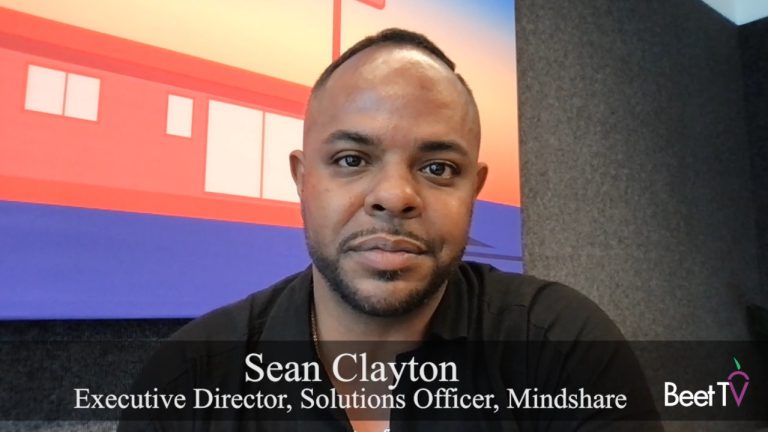
As digital ad identifiers like cookies decline in value, advertisers are being forced to look back to what many consider the old-school art of contextual ad placement.
But, infused by software, context is a tactic that, whilst it appeals to audience’s emotions, can also be super-charged by programmatic.
In this video interview with Beet.TV, Sean Clayton, executive director, solutions officer at WPP’s Mindshare, explains why he is so excited about moving beyond cookies.
Aligning heart and mind
“We can actually move toward what I consider this heart and mind alignment,” Clayton says. “The functionality is moving into more contextual-based media, contextual-based advertising.
“Context has always been considered this old-school thing of the past. But, really, as you start understanding that people move in waves, they move in larger cohorts, the ability to start executing against those cohorts is actually pretty exciting, especially when you can look within the programmatic ecosystem.
“(It) allows also for less of a chase into crazy personalization but executing meaningful creative against larger groups of people that move the needle faster.”
After the identity crisis
Google’s Chrome is joining other browser makers in deprecating third-party tracking cookies, and is planning a replacement in Sandbox.
Apple’s strong privacy stance has continued by making use of its IDFA identifier opt-in by default for consumers.
These and other measures are forcing advertisers to consider something different from their big tactics of the last decade – laser-guided, precision targeting of individuals, regardless of the content they are consuming.
For Clayton at Mindshare, that means discovering what else publishers have to offer.
Toward empathy
“The publishers have so much information,” he says. “What we’ve kind of done historically is we’ve looked at the granularity of one-to-one data, which is going to be a bit of a loss moving forward.
“What is exciting about it is that, as brands partner with our publishers in a meaningful way, that partnership will allow us to understand the reason, the rationale, the ‘why?’ behind the content.
“The data partners that we work with are very important in how we start to contextualise against this context that we were talking about, building what we would call ‘artistic layers’ and what I call ‘data artistry’ so that we can start looking at context differently within the execution layers of the publishers.”
Publishers are central
Clayton says the new approach will allow him to understand the way that that content is triggering a certain emotion.
Brands are starting to get a stronger understanding of publisher relationship and how audiences engage with publishers.
“There’s a clarity between the publishers, the brands, and the audience,” he says.
Even so, that doesn’t mean there is an end to programmatic.
“Once you start to triangulate those things in a meaningful way, programmatic is really doing what it was meant to do a long time ago,” he says.
“(It becomes about) taking this automation strategy that’s been put in place, using the power of the actual technology but using it in a way that starts to actually align emotion, empathy, and human behaviour.”